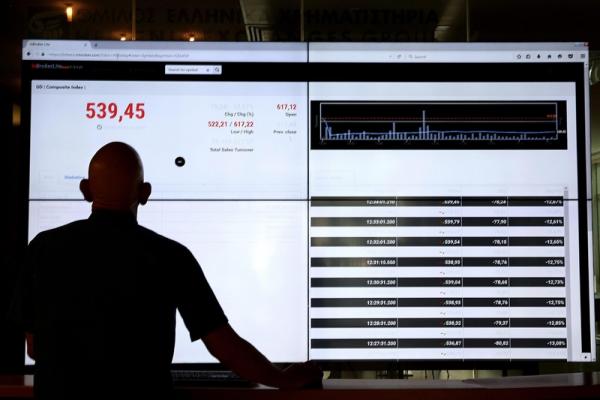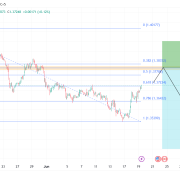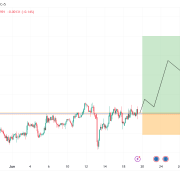
Bel Fuse (NASDAQ:BELFA) Inc. (NASDAQ: BELFB) reported a decrease in sales for the third quarter of 2024 during their earnings call on [date], with a notable 22.1% decline to $123.6 million compared to the same period last year. Despite the downturn in sales, the company highlighted an improvement in gross margins and a strategic focus on operational efficiency and market expansion.
The company is undergoing significant changes, including management reshuffles, restructuring efforts, and the pending acquisition of Enercon Technologies, which is expected to bolster its aerospace and defense market presence.
Key Takeaways
Q3 2024 sales dropped to $123.6 million, a 22.1% decline year-over-year.
Gross margins improved to 36.1%, up from 35% in Q3 2023.
The Connectivity segment showed strength, particularly in aerospace and defense sales.
The Power segment faced seasonal challenges and a strike that impacted shipments.
Management changes included Uma Pingali and Anubhav Gothi taking on key global roles.
Restructuring of fuse manufacturing operations is expected to save $1.5 million annually post-Q1 2025.
Enercon Technologies acquisition aims to enhance market position and is expected to close in Q4 2024.
Q4 2024 sales are projected between $117 million and $125 million.
The company plans to take on $240 million in new debt for the Enercon acquisition.
Bel Fuse is transitioning from a self-help phase to a growth phase with a positive outlook for 2025.
Company Outlook
Anticipated growth across all segments in 2025, driven by sectors like networking, e-mobility, AI, and space.
Total debt expected to reach $300 million post-Enercon acquisition, with debt reduction and regular dividends as financial priorities.
Bearish Highlights
A significant year-over-year decline in Q3 sales.
Seasonal challenges and a strike in the Power segment affected shipments.
A recent supplier loss due to trade restrictions posed challenges.
Bullish Highlights
Gross margin improvement from the previous year.
Q3 bookings in the Power segment doubled from Q2, reaching a peak since Q3 2023.
Magnetic segment bookings also experienced significant growth.
Misses
The company is facing a downturn in sales, which could be attributed to both internal and external challenges.
Q&A Highlights
Executives discussed inventory management and demand, noting bookings from inventory replenishment and genuine demand growth.
Q3 Space revenue was $2 million, with a year-to-date total of $6.3 million.
The Enercon acquisition is expected to introduce new markets and cross-selling opportunities, particularly in Europe.
Bel Fuse’s earnings call outlined a roadmap for recovery and growth despite the current sales downturn. The company is making strategic moves to consolidate its market position and capitalize on emerging opportunities in various high-tech sectors.
With the anticipated closing of the Enercon Technologies acquisition and the implementation of cost-saving measures, Bel Fuse is poised to navigate through its challenges and emerge stronger in the forthcoming fiscal year.
InvestingPro Insights
Bel Fuse Inc.’s recent earnings report reflects a challenging quarter, but InvestingPro data and tips offer additional context to the company’s financial position and market performance.
Despite the reported 22.1% decline in Q3 2024 sales, Bel Fuse’s stock has shown remarkable resilience. InvestingPro data indicates a strong 166.65% price total return over the past year, with the stock trading near its 52-week high at 97.72% of that peak. This performance suggests that investors may be looking beyond the current sales downturn and focusing on the company’s future prospects.
The company’s financial health appears solid, as highlighted by two key InvestingPro Tips. Firstly, Bel Fuse “holds more cash than debt on its balance sheet,” which provides financial flexibility during this transitional period. Secondly, the company “has maintained dividend payments for 22 consecutive years,” demonstrating a commitment to shareholder returns even in challenging times.
While the article mentions the anticipated debt increase for the Enercon acquisition, it’s worth noting that Bel Fuse’s current financial position is strong. The InvestingPro Tip stating that “cash flows can sufficiently cover interest payments” suggests that the company is well-positioned to manage its debt obligations.
The P/E ratio of 14.96, as reported by InvestingPro, indicates that the stock may be reasonably valued compared to earnings, especially considering the company’s growth initiatives and potential synergies from the Enercon acquisition.
For investors seeking a more comprehensive analysis, InvestingPro offers 14 additional tips for Bel Fuse, providing a deeper understanding of the company’s financial health and market position.
Full transcript – Bel Fuse A Inc (BELFA) Q3 2024:
Operator: Good morning, and welcome to the Bel Fuse Third Quarter 2024 Earnings Call. At this time, all participants are in a listen-only mode. A brief question-and-answer session will follow the formal presentation. [Operator Instructions] As a reminder, this call is being recorded. I would now like to turn the call over to Jean Marie Young with Three Part Advisors. Please go ahead, Ms. Jean.
Jean Marie Young: Thank you, and good morning, everyone. Before we begin, I’d like to remind everyone that during today’s conference call, we will make statements relating to our business that will be considered forward-looking statements under Federal Securities laws, such as statements regarding the company’s expected operating and financial performance for future periods, including guidance for future periods in 2024. These statements are based on the company’s current expectations and reflect the company’s views only as of today and should not be considered representative of the company’s views as of any subsequent date. The company disclaims any obligation to update any forward-looking statements or outlook. Actual results for future periods may differ materially from those projected by these forward-looking statements due to a number of risks, uncertainties, and other factors. These material risks are summarized in the press release that we issued after market close yesterday. Additional information about the material risks and other important factors that could potentially impact our financial performance and cause actual results to differ materially from our expectations is discussed in our filings with the Securities and Exchange Commission, including our most recent annual report on Form 10-K for the fiscal year ended December 31, 2023, and our quarterly reports and other documents that we have filed or may file with the SEC from time to time. We may also discuss non-GAAP results during this call, and reconciliations of our GAAP results to non-GAAP results have been included in our press release. Our press release and our SEC filings are all available at the IR section of the website. Joining me today on the call is Dan Bernstein, President and CEO; Farouq Tuweiq, CFO; and Lynn Hutkin, Vice President of Financial Reporting and Investor Relations. With that, I’d like to turn the call over to Dan. Dan?
Dan Bernstein: Yes. Thank you, Jean, and we appreciate everyone joining our call this morning. We are pleased that our third quarter sales and gross margins each landed above the midpoint of our guidance. As anticipated, our Connectivity segment had a strong quarter, driven by robust sales into Aerospace, Defense and Space applications. And our Magnetics segment experienced incremental growth on a sequential basis from Q2 2024, which is good to see. The Power segment sales were within our expectations for the quarter, given the previously discussed seasonality in Europe and during August and the impact from trade restrictions on one of our former suppliers in China. The only new factor which impacted revenue of our Connectivity segment was the strike at one of our aerospace customers, which slowed the value of shipments late in the third quarter. During the third quarter, we have made two key additions to the corporate team as we continue to add high impact individuals. In the new creative role, Uma Pingali has joined as Global Head of Sales and Marketing, and Anubhav Gothi has joined as Global Head of Corporate Contracts. Uma was most recently the President of Global Sales at Farnell, a premier distributor in the electronic industry. Throughout his long-term tenure career, Uma has proven a track record of growing sales through a variety of efforts, including the turnaround of unperforming regions, entering new geographic markets, pursuing a tailored approach to product technology, and identifying and executing cross-selling opportunities. Uma will be responsible for creating and executing strategies that drive growth beyond the current trends, identifying areas for improvement, challenging existing processes and implementing innovative solutions to optimize sales performance. Anubhav is a seasoned proven supply chain and procurement leader with a heavy history of securing efficiencies and short-saving outcomes for multibillion dollar companies including CommScope, Motorola (NYSE:MSI) Mobility and Google (NASDAQ:GOOGL). He’s been tasked with developing and implementing a procurement strategy culminating robust vendor relations, negotiating contracts and championing cost effective, sustainable procurement practice on a global basis. We are very much looking forward to the contribution that each Uma and Anubhav will bring to develop future positions of the company for a long-term success. Now I’d like to turn it over to Lynn.
Lynn Hutkin: Thank you, Dan. From a financial perspective, in summary, we saw continued margin expansion on a lower sales base when looking at Q3 2024 versus Q3 2023. Third quarter 2024 sales came in at $123.6 million, representing a 22.1% decline from the third quarter of 2023. The sales fluctuation was driven by our Power and Magnetics segments, as we will discuss further, partially offset by growth in connectivity sales versus Q3 last year. Our gross margin increased to 36.1% in Q3 2024 from 35% in Q3 2023, and these profitability improvements were largely driven by our Magnetics and Connectivity segments. Turning to some details at the product group level. Power Solutions and Protection sales for the quarter were $48.7 million, representing a 35% decline from Q3 last year. The decline in sales was mainly due to lower sales of our power products used in networking and consumer applications. On a positive note, we saw continued strength in sales of our rail products, which grew over 40% from Q3 2023, accounting for a $2.6 million increase in sales from Q3 2023. This segment posted a gross margin of 39.4% in the third quarter of 2024 as compared to 41.7% in the third quarter of 2023. Turning to our Connectivity Solutions Group. Sales for Q3 2024 came in at $55.7 million, up 7.6% from Q3 2023. The main growth driver within connectivity was within the distribution channel, where sales were up $1.2 million as compared to Q3 2023. Sales into commercial air applications totaled $12.5 million for Q3 2024, an increase of $1.2 million or 10.3% from Q3 2023. Military sales amounted to $11.6 million for the quarter, a level consistent with Q3 2023. The gross margin for this group was 36.6% for the third quarter of 2024, which represents continued improvement from the 35.8% gross margin in the third quarter of 2023. This margin expansion was made possible due to the operational efficiencies achieved through facility consolidations that were completed in 2023, along with implementation of contract renewals on more balanced terms and a favorable impact of FX-related to the peso versus Q3 2023. These favorable margin factors were partially offset by minimum wage increases in Mexico that went into effect in Q1 2024. Lastly, our Magnetic Solutions Group posted sales of $19.2 million in Q3 2024, representing a 40% decrease from Q3 2023. This reduced sales level was generally in line with expectations discussed on last quarter’s earnings call and largely related to lower shipments into a large networking customer as they continue to work through inventory on hand. The gross margin for this group was 27.3% in the third quarter of 2024 as compared to 22% in the third quarter of 2023. This improvement in margin was primarily driven by lower fixed overhead costs resulting from the facility consolidations in China completed in late 2023, partially offset by unfavorable FX related to the Chinese renminbi versus Q3 2023. R&D expenses were $5.4 million in Q3 2024, a level consistent with Q3 2023. We expect future quarters to be generally in line with Q3 2024 expense. Our selling, general and administrative expenses were $26.7 million as compared to $23.8 million in Q3 2023. Excluding the $4.2 million of legal and other costs related to the Enercon acquisition, our SG&A expenses were lower by $1.3 million as compared to Q3 2023, primarily due to lower variable expenses such as commissions and incentive compensation. Our effective tax rate for third quarter of 2024 was 27.8%, up significantly from the 18.2% of Q3 2023. There was a one-time item contained in the third quarter tax provision in the amount of $1.3 million. Excluding this item, the Company’s effective tax rate would have been 15.7% in the third quarter of 2024. Turning to balance sheet and cash flow items. We ended the quarter with $163.8 million in cash and securities, an increase of $36.9 million from year end. We generated $65.7 million in cash flows from operating activities during the first nine months of 2024 and had capital expenditures of $7.9 million. From an inventory perspective, the downward trend that we experienced over the past several quarters has continued into Q3, reflecting a $12.3 million reduction from year end. The lower inventory levels were primarily seen in the areas of raw materials and finished goods, as we continue to work through our own inventory on hand. I’ll now turn the call over to Farouq for additional commentary.
Farouq Tuweiq: Thank you, Lynn. As we are rounding the corner here on inventory in the channel and starting to see some green shoots of recovery, the team has been laser focused on executing on operational improvements as we have been doing for the last few years. During the third quarter we initiated a consolidation of our fuse manufacturing operations. Currently, our fuses are manufactured at a separate site in China and will be transitioned to other existing sites as a means of further reducing our operational footprint and adding efficiencies to our overhead costs. The fuse initiative is expected to result in a restructuring cost of approximately $4.2 million, of which $200,000 was incurred in the third quarter, $2.1 million is expected to be incurred in the fourth quarter of 2024, with the balance of $1.9 million expected to be incurred in 2025. This project is scheduled for completion by the end of Q1 2025 and is expected to result in annualized cost savings of $1.5 million once complete. The previously announced restructuring project at our Glen Rock, Pennsylvania facility is progressing as planned with scheduled completion by the end of 2024. With cumulative expected annualized cost savings of $2.5 million, we’ve been benefiting from approximately $1.5 million of the Glen Rock cost savings throughout 2024 and expect $1 million to be incremental in 2025. Turning to M&A. And as announced in mid-September, Bel has agreed to acquire 80% of Enercon Technologies with a path to acquire the remaining 20% by early 2027. With 100% of their sales within aerospace and defense end markets, the addition of Enercon accelerates our strategy of moving further to critical applications with nice sole source positions. This creates more cohesion across our product segments and introduces exciting cross-selling opportunities. We’ve been working very closely with the Enercon management team since signing and are very much looking forward to collaborating with them to define our new go-to-market strategies for our combined businesses supporting the aerospace and defense end markets across the regions in which we collectively serve. The transaction is expected to close during the fourth quarter of this year and we look forward to sharing additional details as we work through our post close integration process. Looking ahead to the fourth quarter. We’re anticipating base Bel to be largely in line with Q3 2024 levels as there are some offsetting factors at play. The range noted in our earnings release of $117 million to $125 million is inclusive of some rebound in rail sales and slight recovery in networking and distribution across the business. This is offset by our normal seasonal slowdown in Q4 each year given the Golden Week holiday in China in October and other holiday closures in the U.S. and Europe later in the quarter. We were pleased that we did start to see an uptick in bookings during the third quarter. To provide some context around what we saw. Within our Power segment, Q3 2024 bookings were double what they were in Q2 2024, representing their highest booking level since Q3 2023. Within our Magnetic segment, Q3 2024 was their highest bookings quarter since Q4 of 2022. Given our standard lead times, this increase in bookings will largely translate into higher sales going into 2025. Looking at 2025, we’ve kicked off our planning for the coming year and are looking forward to it. We’re early in this process against the backdrop of few moving pieces. The overall message for next year is expectation of year-over-year growth across all three segments. Our Power segment is forecasting growth to be driven by a rebound in networking, e-mobility and distribution and growth within AI specific applications. Our Connectivity segment is projecting growth to largely be driven by the same factors as 2024 including defense applications and a growing space end market along with distribution and networking. We think Magnetics will have the largest percentage growth based on current forecasted demand from our network and distribution customers. There are a number of factors and variables within each segment that can change these projections. But this is what we see today. It is this new view of 2025 upon which we’ll be assessing our SG&A spend and making needed adjustments to align our fixed costs with these anticipated sales levels. As a reminder, this commentary is only related to Bel’s base business and does not include incremental sales related to the Enercon acquisition which is expected, as noted, to close in the fourth quarter this year. Shifting over to capital allocation. And as previously discussed, we’ll be taking on new debt of $240 million in connection with the acquisition of Enercon and the interest on that debt will be approximately 6.5%. This will bring our total outstanding debt to $300 million with a blended interest rate of approximately 5.7%. And in addition to our regular weight dividends and continue investment in the business through CapEx, our next immediate priority from a capital allocation in the near-term will be on debt paydown to deleverage and avoid interest expense. We will continue to assess our capital priorities as we have done on an ongoing basis. Overall, we are pleased with the progress we have made in strengthening Bel’s base business over the past four years and are excited about the road ahead with Enercon and the new members of our corporate team. We feel this is a pivotal moment for Bel as it marks the transition from our self-help phase to a new growth phase of Bel’s journey and I could not be more excited to embark on this next chapter. And with that I’ll turn the call back over to Dan.
Dan Bernstein: Thank you, Farouq. At this point we’d like to open up the call for questions.
Operator: Thank you. We will now be conducting a question-and-answer session. [Operator Instructions] The first question comes from the line of Bobby Brooks with Northland Capital Markets. Please go ahead.
Bobby Brooks: Hey guys, good morning. Thank you for taking my question. So with the Power and Protection obviously there’s a pretty notable step down sequentially and you guys touched on it a little bit. I know you had the supplier that you lost because the recently enacted trade restrictions, but that was only – that was only for $3 million to $4 million of business per quarter and we were down more like $10 million. So could you just discuss a little bit more what drove that sequential step down and maybe compare that with what the factors you’re seeing as why you see year-over-year growth in 2025?
Lynn Hutkin: Sure. So Bobby, are you looking at it sequentially from Q2 to Q3?
Bobby Brooks: Yes, yes.
Lynn Hutkin: So the other impact, so in addition to the supplier on the trade restrictions, the largest thing impacting Power from Q2 to Q3 is actually the seasonality that we have every year in Europe in Q3. So things like rail and e-mobility, those are all based out of our Europe segment and those are just naturally lower in the third quarter because there are some closures at our Slovakia site for a few weeks in August each year. So that would be the largest dip in addition to the CUI business that we previously discussed.
Bobby Brooks: And then just the bookings that you guys saw in September and October has given you guys that confidence that you’re going to see year-over-year growth return in the Power and Protection segment?
Dan Bernstein: Yes, we think that is the case, Bobby. Obviously, a fair amount of moving pieces here, but I think as we noted, we do expect a return to growth here across the business, including Power, looking at inventory levels, looking at the conversations that are going on with our customers, the MPI and especially as we’re coming into kind of the year end, right, more discussion. So I’d say we’re feeling better and a return to growth, again, commentary across the business, including Power.
Bobby Brooks: That’s terrific to hear. And then maybe just an update on finding that new supplier to replace that that business that was lost because of that trade restriction.
Dan Bernstein: Yeah. So we are in the process of identifying replacements as we talked about. And as you know, we are in a longer design cycle business. So step one is identifying which we have identified some replacement parts. It’s going to take a little bit of time to go and have the customers requalify their design to substitute the parts from the old vendor to the new vendor. So that’s going to take some time. And when considering the inventory channel, I would say that sense of urgency might not entirely be there off the bat here as folks are burning down inventory. So probably the best bet for recoverability there would be something along the lines of redesigns or demand pickup within their own segments on a customer side. So that’s why we think we’ll recover some of that as we go through 2025. But we’re kind of seeing where that shakes out. But it’s not going to be a quick flip and switch just because we identify an alternative.
Bobby Brooks: Okay, that’s awesome. And then last one for me, just trying to dig a little bit more into the strong bookings. I know back in the first quarter call we talked or discussed about the really interesting AI opportunities for especially within the Power and Protection. So I was just curious if any of those bookings that you guys saw in September and October have been related to any AI orders or AI and products or maybe any other kind of emerging growth opportunities for you, whether that’s e-mobility, space, or rail.
Dan Bernstein: Yes, I think the answer in short is yes. So some of the bookings have come from AI customers and as we also – so we have to kind of follow orders bookings that we got. Also as we just look at the conversations being had in the forecast with other guys that are about to or haven’t yet put bookings on the books yet, we expect that to kind of come in short order as well. So I think the answer to your question is correct. The other one that we saw in the bookings that had a nice growth is our Fuses business. And Fuse is generally, it’s considered one of the earlier recovery items in our industry. So it is a good leader indicator. So Fuses was up pretty materially for us in Q3. And I think, Lynn, it was up roughly 30%, 35%, I think it was up, right? So it was nice to see the Fuses up coupled with the bookings. These are good, solid indicators.
Bobby Brooks: I would completely agree with that. Thank you for the color, guys, and I’ll return to the queue and hats off on the nice quarter.
Operator: Thank you. The next question comes from the line of Jim Ricchiuti with Needham & Co. Please go ahead.
Jim Ricchiuti: Hi. Thank you. Good morning. You may have provided this detail, I apologize if you did. But I’m wondering, can you quantify the impact from the strike at Bel in the quarter and a follow-up to that is just whether the guidance for Q4 has taken into account the potential for a longer strike, which I guess now appears to be the case. Thanks.
Dan Bernstein: Yes. So we haven’t quantified that, Jim. We definitely had an impact on us in terms of our amount of we – let’s say couldn’t ship. But I would say it was nothing. It wasn’t overly material for this quarter. So I think the team did a nice job reacting to that and kind of working on other things and other products. Heading into Q4, our guidance is reflective of, call it, the impact of the strike. I think the – and that’s kind of what we’re alluding to a little bit in terms of some of the volatility around that. So we try to capture our best guess kind of base case, if you will. Obviously, we’re through October here and it has an impact. So I think we really think – we had to take into account our guess on November and December. So I would say, we’re hoping for some recovery, but it’s not – we don’t think it will be material in Q3, just given by the time they all come back to work, it will take a few weeks for everything to get going.
Dan Bernstein: I would think the safe position we take the way things look, most likely, we won’t see sales for Aerospace for this one customer for the rest of the year.
Jim Ricchiuti: Got it. Thanks. And just on the green shoots that you guys cited in networking and industrial, is this a case of perhaps just the excess inventory being worked down enough and some restocking or – and this may be a harder question to answer, just signs of actual improvement in some of these markets and where you think there may be some actual improvement, particularly in the industrial area?
Farouq Tuweiq: Sorry, Jim. So if I’m understanding a question, are you saying how much of the bookings is a replenishment of the actual demand growth at the customer’s level?
Jim Ricchiuti: Yes. I guess, what I’m saying, we’ve heard this a bit that in some cases, there may be inventories have been worked down and some of what we’re hearing is just some natural replenishment, but not necessarily signs of actual demand driving that yet. And I don’t know if that’s something you’ve noticed or better yet. I mean, if you see some – in the industrial market because you guys sell pretty broadly, can you tell where some of these green shoots are coming from?
Dan Bernstein: Yes, Jim. I think when we talk industrial, it’s a little more harder to pick out. But for us, when we look at new growth opportunities, not replenishment opportunities are really, the areas that we see that is we see Space, for example, where we picked up 160 customers in distribution that are buying orders today that might go in the high volume. And then with EV, we see those are new opportunities. And of course, AI, I think probably our two largest customers we’re going to pick up next year might come from AI. So I think if you look at new creation, new demand, I would think AI, Space and EV are the driving forces of new customers that are buying from us.
Farouq Tuweiq: And I think I agree with Dan, on the new – some of the new customers, the wins that we’re seeing are pretty good. I think on the existing customers, because remember, Jim, I think when inventory gets backed up and Dan, can correct me if I’m erring – when inventory generally gets backed up, it’s not as bad of a picture from our customers’ perspective, right, because they still have inventory to sell. So I think once the inventory comes down, you turn to a little more normal cadence of ordering that – a little bit more reflective of demand. So they kind of go a little bit hand in hand. So obviously, we were down pretty decent numbers this year. And I would attribute that demand not being down that much from our customers, so to speak, but it was really kind of working down the inventory side of it.
Jim Ricchiuti: Got it. That’s helpful. And just – did you give a Commercial Space revenue number? I know it’s a small part of the business, but it’s obviously a growth area.
Lynn Hutkin: Yes. So the Space revenue for Q3 was $2 million. So that brings our year-to-date up to $6.3 million.
Jim Ricchiuti: Got it, thanks very much.
Operator: Thank you. Next question comes from the line of Theodore O’Neill with Litchfield Hills Research. Please go ahead.
Theodore O’Neill: Thank you very much and congratulations on a good quarter. My first question is about Enercon Technologies. And I was wondering if you could talk a bit more about what this brings to the table in terms of products that you may not have had before in the Aerospace and Defense industry? And what their cross-selling opportunities are?
Farouq Tuweiq: Yes. So thank you for that. So for Enercon, which for everybody’s benefit, will be sitting in our – and ultimately roll into our Power segment. Today, our Power segment does not service these end markets. So it is a new market addition, both on the Defense, Commercial Air and Emerging Space as well. So now we start creating some interesting cross-pollination between the Connectivity and the Power segment. So that’s one. Two is Enercon also opens up a couple of new markets potentially for us that we are not in today. And the other thing from a products perspective, I would say, generally, if you ask power supplies, we will say power supplies are power supplies, there’s some nuances and sophistication to each of them. I would say their product set is a little bit different than ours, but also kind of the same, right. So we sell some of that product into the rail that’s pretty highly sophisticated, highly custom-type of applications. Where Enercon excels is their MOQs are one piece, right. So they’re highly, highly custom. And they are – given the conservative nature of the customer side with various regulatory requirements and manufacturing elements around product tracing and the like, they obviously have that side of it as well. So you’ve got to look at it while we may know the products, and we do know some of these products, it’s really the ecosystem, the customer relationships, the go-to-market and the brand name that they bring is what differentiates them. So we tend to think about more of an end market expansion and some opportunity potentially for the cost side, which we had to underwrite as part of our base case, but we think there’s opportunity there. But really, it’s a revenue play here.
Dan Bernstein: And just to add some more flavor to it. Just for example, one of the target areas that we’re looking at before we acquired them was Europe, and they realized to be successful in Europe, they had to have a manufacturing base. And we have an ideal factory that can support their needs. We’re going to be with them next week – I’m sorry, in two weeks, for them to look at our factory and see what the possibilities are we can offer them. Also from a – besides cross-selling opportunities, many of our customers are the same, but we do have some customers that they sell to, that we don’t sell to back and forth. But a bigger solution for us is the more we can go to any Military Aerospace customer and give them a full basket of products, the more we can build up our relationship with that customer. And now there’s very few customers that can offer both Connectivity and Power supply, which takes a lot of their purchasing table. So this way, they can be with one group or one company to solve a lot of their problems going forward. So we think it’s just a very exciting opportunity across the board.
Theodore O’Neill: Okay. Yes, makes sense. My other question is just about the rail business. Is this a highly regional business? And what region is showing the strength in rail?
Farouq Tuweiq: I think the way you think about it is largely our manufacturing comes out of Slovakia. And the customers that we service are global. So when we talk about rail, obviously, maybe other parts of the world are working from our customers’ perspective. But given our normal cadence in the European shutdown, that’s why it impacts the business because our manufacturing occurs in Slovakia. That’s how I kind of think about the manufacturing impact for us.
Dan Bernstein: We would say a good portion of our sales are European-based customers, rail customers that sell throughout the world.
Farouq Tuweiq: Correct. Yes. So we’ll kind of transact there, then they ship it around, so to speak. Yes, that’s a good point.
Theodore O’Neill: Okay, thanks very much.
Operator: Thank you. As there are no further questions at this time, ladies and gentlemen, we have reached the end of question-and-answer session. I would now like to turn the floor over to Dan Bernstein for closing comments.
Dan Bernstein: Well, just once again, thank you for joining our call today, and we’re looking forward to continued success, and we’ll speak to you the final – fourth quarter of next year. Have a good day.
Operator: Thank you. This concludes today’s teleconference. You may disconnect your lines at this time. Thank you for your participation.
Farouq Tuweiq: Thank you very much.
This article was generated with the support of AI and reviewed by an editor. For more information see our T&C.












